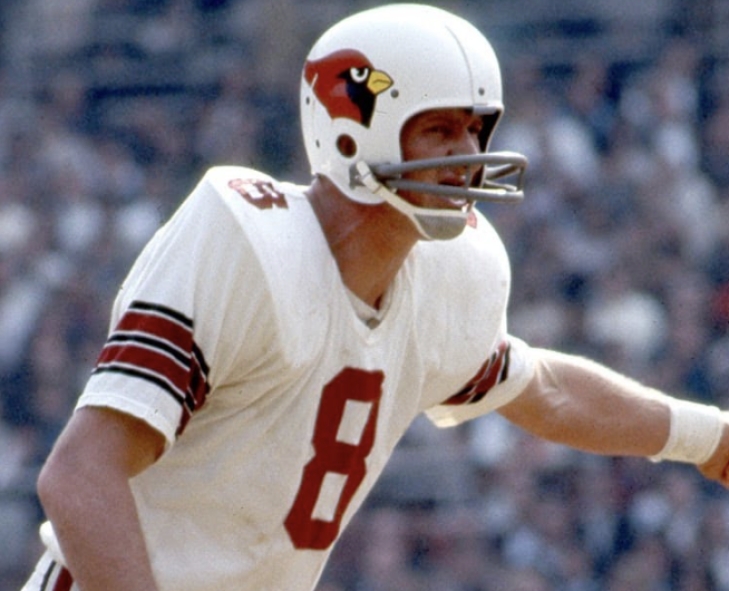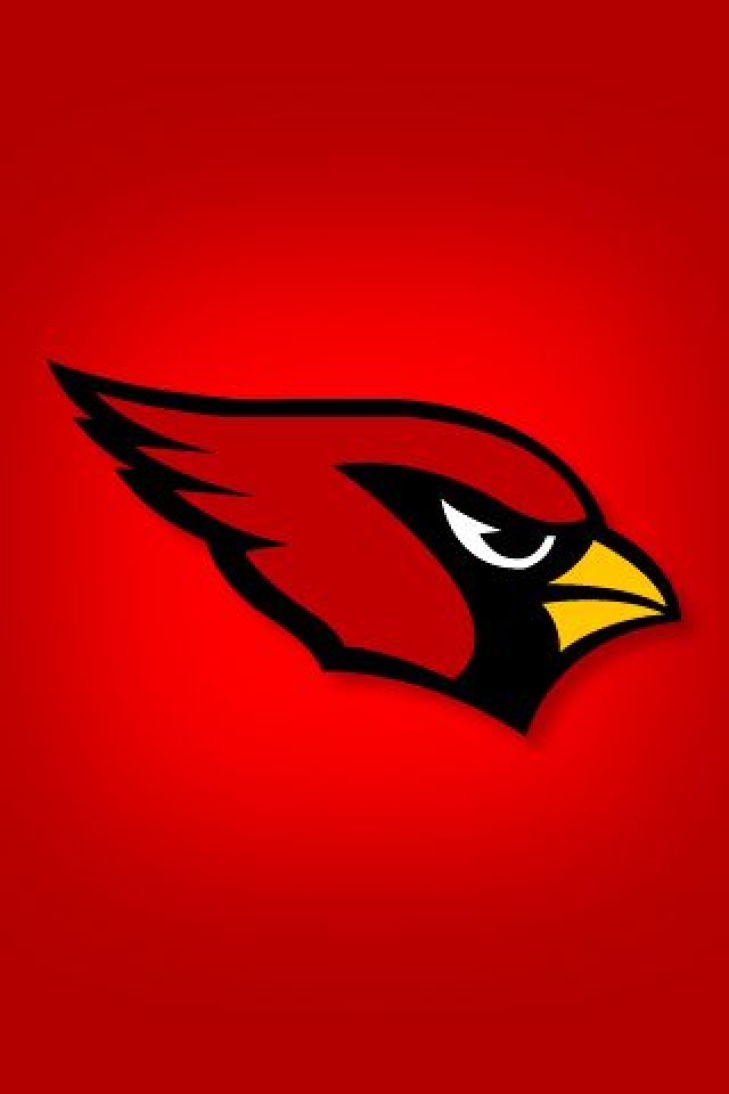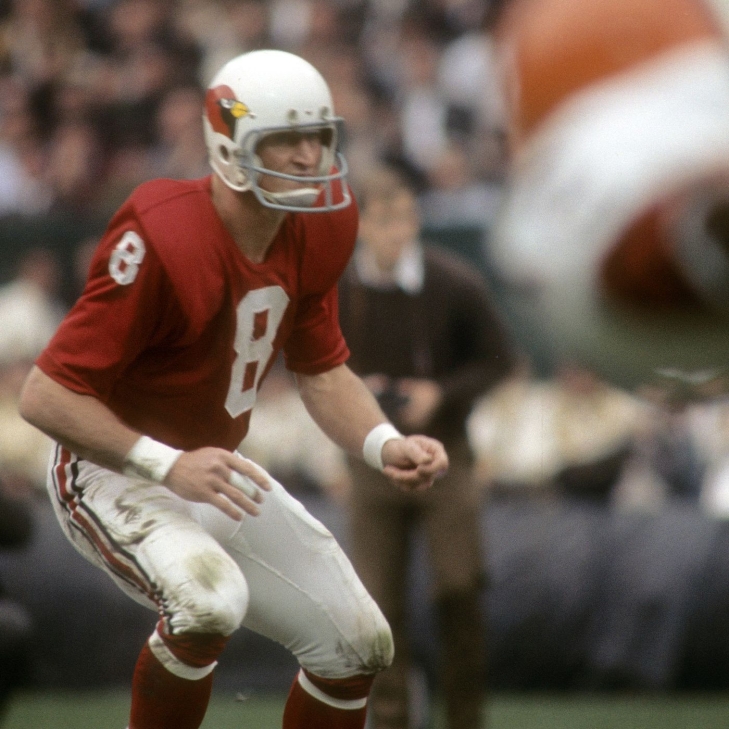The Pro Football Hall of Fame Revisited Project: 1979 Final VOTE
1979 Pro Football Hall of Fame Revisited Project Class.
Here we are! Again!!
If you have been following our Pro Football Hall of Fame Revisited Project, you know we have asked the rhetorical question: What if the PFHOF began in January 1946?
After soliciting and obtaining a passionate group of football fans and historians, we sent out a ballot for a Preliminary Vote, in which we asked each voter to give us 25 names as their semi-finalists and 5 in the Senior Pool. We then asked the group to vote for their 15 Finalists in the Modern Era and 3 in the Senior Category. The final stage was to vote for their five Modern Era inductee and one Senior inductee.
This is the result of the 34th official class.
Below are the final results of this project based on 32 votes.
Remember that we have reverted back to the top five candidates entering the Hall in the Modern Era
This is for the “Modern Era”
*Bold indicates they have been elected to the Pro Football Hall of Fame Revisited Class of 1979:
|
Player |
Year of Eligibility |
Vote Total |
|
Dick Butkus LB |
1 |
32 |
|
Johnny Unitas QB |
1 |
32 |
|
Larry Wilson DB |
2 |
22 |
|
Don Maynard E-FL-HB |
1 |
11 |
|
Leroy Kelly RB |
1 |
10 |
|
Tom Sestak DT |
6 |
8 |
|
Billy Shaw G |
5 |
7 |
|
Bob Brown T |
1 |
7 |
|
Gene Hickerson G |
1 |
7 |
|
Abe Woodson DB |
8 |
6 |
|
Dick LeBeau DB |
2 |
6 |
|
Chuck Howley LB |
1 |
6 |
|
Eddie Meador DB |
4 |
4 |
|
Alan Ameche FB |
14 |
3 |
|
Johnny Robinson DB-FL-HB |
3 |
2 |
This is for the “Senior Era”,
*Bold indicates they have been elected to the Pro Football Hall of Fame Revisited Class of 1979.
|
Pat Harder |
1 |
13 |
|
Ward Cuff |
7 |
9 |
|
Woody Strode |
5 |
7 |
|
None of the Above |
N/A |
3 |
This is for the “Coaches/Contributors”,
*Bold indicates they have been elected to the Pro Football Hall of Fame Revisited Class of 1978.
|
Art Rooney (Owner) |
1 |
18 |
|
Weeb Ewbank (COACH) |
3 |
11 |
|
Charles Bidwill (OWNER) |
10 |
1 |
|
None of the Above |
N/A |
2 |
About the 1979 Inductees:
Dick Butkus LB, CHI 1965-73: Inducted in the Pro Football Hall of Fame Revisited Project in 1979 on his 1st Ballot. Inducted into the actual Pro Football Hall of Fame in 1979.
A beast at the University of Illinois, Dick Butkus was a two-time All-American who won the Big Ten MVP in 1963. Butkus stayed close to home as a pro, as he was taken with the third overall pick in 1965.
Chicago was not a powerhouse when Butkus played, but he was the reason to pay attention to the team. One of the most punishing tacklers in football history, offensive skill players were quaking with the knowledge that they could be on the end of a Butkus tackle. Butkus would define the middle linebacker position, and his versatility became a standard that only a few have since matched.
Butkus played in the NFL for nine seasons, earning Pro Bowl honors for the first eight and being named a First Team All-Pro for five of them. He is also one of the select few who have won the Defensive Player of the Year award twice.
After Butkus retired, he went on to become a successful actor.
Johnny Unitas, QB, BAL 1956-72 & SDG 1973: Inducted in the Pro Football Hall of Fame Revisited Project in 1979 on his 1st Ballot. Inducted into the actual Pro Football Hall of Fame in 1979.
Johnny Unitas is considered by many (and include us in that category) as the games first modern Quarterback, an incredible accomplishment for someone who was not drafted in the top 100.
“Johnny U” took over the reins full time in 1957 and promptly took the Colts to their first winning season. The following season was even more magical. Unitas took his team to the NFL Championship and won the game in what was then called “The Greatest Game Ever Played”, a win in overtime that cemented the National Football League as a television juggernaut.
Unitas would top that in 1959, again winning the NFL Title and this time winning his first of three MVPs. Four times Unitas would lead the NFL in Touchdown Passes and four times he would lead the league in Passing Yards. The revolutionary pivot and five-time First Team Pro Bowl selection was elected to the Pro Football Hall of Fame in 1979, his first year of eligibility.
Larry Wilson, DB, STL 1960-72. Inducted in the Pro Football Hall of Fame Revisited Project in 1979 on his 2nd Ballot. Inducted into the actual Pro Football Hall of Fame in 1978.
Larry Wilson fell to the Seventh Round of the 1960 Draft as many teams worried about his small stature translating into the pro ranks. As it turned out, the St. Louis Cardinals got one of the biggest bargains in draft history.
Wilson played his entire career with the Cardinals, and is regarded as one of the best Safeties in the game. An eight-time Pro Bowl and five-time First Team All-Pro, Wilson led the NFL in Interceptions in 1966 (10), and had 52 overall. Wilson was also excellent in the pass rush, and while he did not invent the Safety Blitz, he was the first to perfect it.
Don Maynard, FL-WR, NYG 1958, NYT/NYJ 1960-72 & STL 1973. Inducted in the Pro Football Hall of Fame Revisited Project in 1979 on his 1st Ballot. Inducted into the actual Pro Football Hall of Fame in 1987.
A college star at Texas Western (the future UTEP), Don Maynard was drafted by the New York Giants. He played for them sparingly as a rookie, prompting him to leave the team for Hamilton of the Canadian Football League the following season. In his third professional year, Maynard returned to New York City, but this time with the Titans of the upstart American Football League.
Maynard would become the team’s top Wide Receiver, exceeding 1,000 Yards five times, and winning the AFL Receiving Title in 1967. A four-time Pro Bowl and All-AFL Team Selection, Maynard helped lead the Jets to a Super Bowl win as the primary target for Joe Namath.
Retiring after a final season with the St. Louis Cardinals, Maynard left the game with an exceptional 11,834 Receiving Yards and 88 Touchdowns.
Leroy Kelly, RB, CLE 1964-73. Inducted in the Pro Football Hall of Fame Revisited Project in 1979 on his 1st Ballot. Inducted into the actual Pro Football Hall of Fame in 1994.
We can't even imagine what it must have been like for Leroy Kelly to follow in the footsteps of Jim Brown.
Realistically, who could?
Despite this, Kelly, who was drafted by the NFL in 1964, initially served as Brown's understudy and assumed the starting role when Brown unexpectedly retired. Kelly thrived, going to six straight Pro Bowls (1966-71) and winning the Rushing Title twice (1967 & 1968). Kelly also led the NFL in Rushing Touchdowns in three consecutive seasons (1966-68). While his production was not equal to Brown's, whose was?
Kelly rushed for 7,274 Yards and 74 Touchdowns on the ground, which for his era, was very impressive.
Art Rooney, Owner, PIT 1936-87. Inducted in the Pro Football Hall of Fame Revisited Project in 1979 on his 1st Coaches/Contributor Ballot. Inducted into the actual Pro Football Hall of Fame in 1964.
Art Rooney founded the Pittsburgh Steelers in 1933, where they were named the Pirates until 1942. The Steelers struggled for years, but Rooney weathered huge financial losses to keep the team afloat in a city that loved the game of football.
Rooney is very rare in that he was far more successful after he was inducted into the Pro Football Hall of Fame (though not in our revisted project). The Steelers would win four Super Bowls in the 1970s and become one of the most popular teams in sports.
Our All-Time Top 50 Arizona Cardinals are now up
Yes, we know that this is taking a while!
As many of you know, we at Notinhalloffame.com are slowly generating the top 50 of each major North American sports team. We have another one ready, with our Top 50 Arizona Cardinals.
As for all of our top 50 players in football, we look at the following:
1. Advanced Statistics.
2. Traditional statistics and how they finished in the National Football League.
3. Playoff accomplishments.
4. Their overall impact on the team and other intangibles that are not reflected in a stat sheet.
The most tenured team in the National Football League, the Arizona Cardinals have taken a long road, traversed multiple cities, and seen more hard times than good.
Formed in 1898 as the Morgan Athletic Club, they would be renamed the Racine Normals for two years before becoming the Racing Cardinals. Twenty years later, they were charter members of the National Football League as the Chicago Cardinals.
In the Windy City, the franchise won two titles, the first in 1925, disputed by the Pottsville Maroons, but there was no NFL Championship Game back then. The second title is undisputed, as with their "Million Dollar Backfield," they won the Championship Game in 1947, the last title they have won.
Taking a backseat to the Bears in Chicago, the Cardinals relocated to St. Louis in 1961. They only made the playoffs thrice in St. Louis and relocated again in 1987, becoming the Phoenix Cardinals. That name would change again to the Arizona Cardinals, and with Kurt Warner as their Quarterback, they made it to their first Super Bowl in the 2008 Season. They did not win but appear to have a permanent home in the desert.
Here is the inaugural top five:
1. Larry Wilson
2. Larry Fitzgerald
3. Charley Trippi
4. Roger Wehrli
5. Dan DIerdo
You can find the entire list here.
We thank you for your continued support of our lists on Notinhalloffame.com.
1. Larry Wilson
A two-way star at Utah, Larry Wilson barely reached six feet, which was primarily why he dropped to the Seventh Round of the 1960 NFL Draft, and it would not take long to see that he was the steal of the day.
A Cardinal for the entirety of his 12 NFL campaigns, Wilson was one of the most outstanding Safety of the 1960s and helped redefine the position. With his speed and tackling ability, the Cardinals had a player who could execute the Safety Blitz, a novelty at the time. Wilson had 21 (unofficial) Sacks over his career, and in traditional Defensive Back stats, he recorded 52 Interceptions, including a league-leading 10 in 1966, a year where he was second in MVP voting. He was also known for his toughness, having once played with casts on both arms.
From 1962 to 1970, Wilson was named to the Pro Bowl, and he rattled off five consecutive First Team Selections from 1966 to 1970. Not surprisingly, Wilson was chosen for the 50th, 75th, and 100th NFL Anniversary Teams.
Wilson entered the Pro Football of Fame in his first year of eligibility, one of two people (Tom Nix) being the other, to accomplish this astounding feat.
He may never have appeared in a playoff game, but many a game was won for St. Louis because Wilson was on their squad. The Cardinals retired his number 8 in 1970; in 2006, he entered their Ring of Honor.




